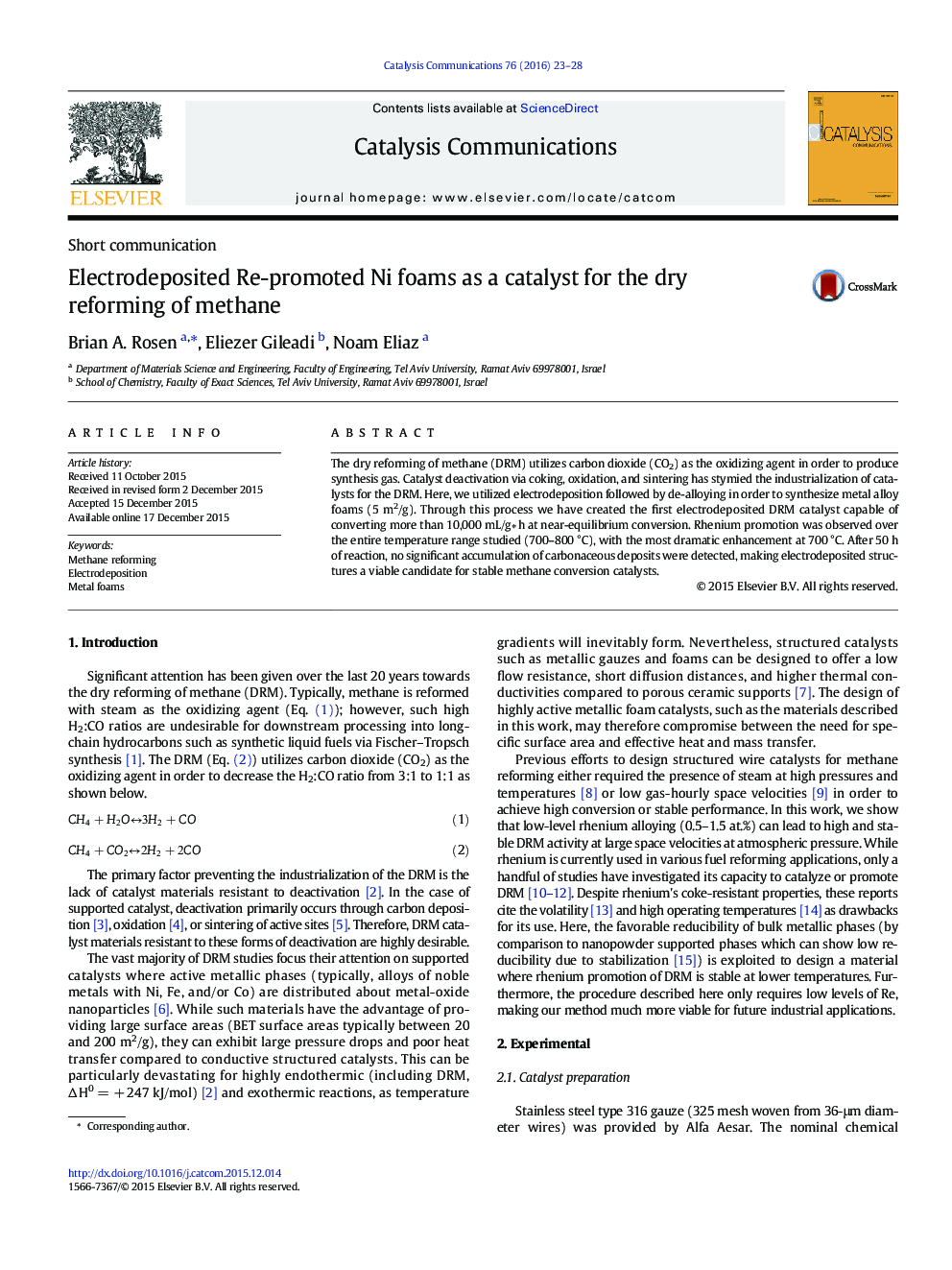| Article ID | Journal | Published Year | Pages | File Type |
|---|---|---|---|---|
| 49941 | Catalysis Communications | 2016 | 6 Pages |
•First electrodeposited foam that shows high activity for methane reforming.•Rhenium alloying in electrodeposit promotes stability in methane reforming.•Mode of deactivation is not coking, rather oxidation (which is preventable).•Unique non-stoichiometric Re-oxide phase is the primary promoter.
The dry reforming of methane (DRM) utilizes carbon dioxide (CO2) as the oxidizing agent in order to produce synthesis gas. Catalyst deactivation via coking, oxidation, and sintering has stymied the industrialization of catalysts for the DRM. Here, we utilized electrodeposition followed by de-alloying in order to synthesize metal alloy foams (5 m2/g). Through this process we have created the first electrodeposited DRM catalyst capable of converting more than 10,000 mL/g ∗ h at near-equilibrium conversion. Rhenium promotion was observed over the entire temperature range studied (700–800 °C), with the most dramatic enhancement at 700 °C. After 50 h of reaction, no significant accumulation of carbonaceous deposits were detected, making electrodeposited structures a viable candidate for stable methane conversion catalysts.
